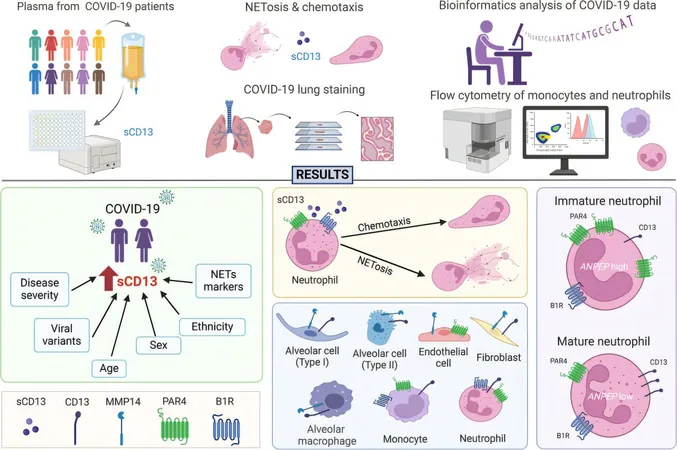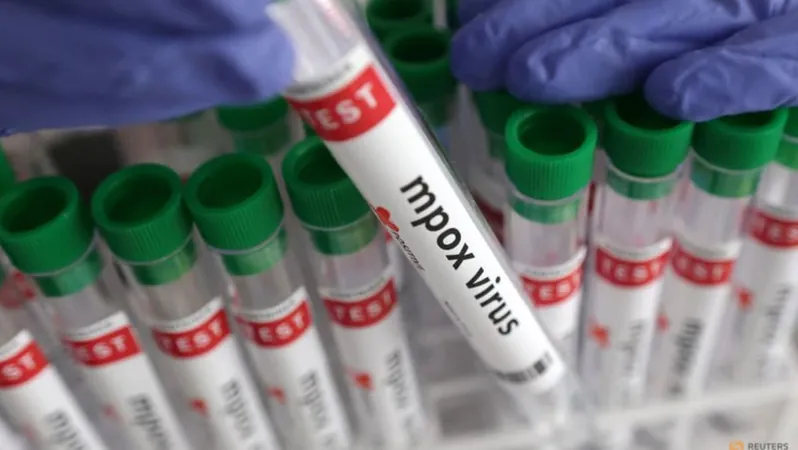
The Blood Pressure Debate: Can Lower Targets Save Lives After a Brain Hemorrhage?
2025-04-09
Author: Rajesh
Challenging Conventional Wisdom on Blood Pressure Management
In a groundbreaking study, the ATACH-2 trial explored the impact of aggressive blood pressure (BP) control in patients suffering from intracerebral hemorrhage (ICH). With nearly 1,000 participants, the trial aimed to compare intensive systolic BP targets of 110-139 mm Hg against standard targets of 140-179 mm Hg. However, it was halted early due to disappointing results, revealing that both groups had nearly identical rates of death or major disability—38.7% for intensive treatment versus 37.7% for standard treatment. While adverse events were rare, those in the intensive treatment group did experience a higher rate of renal complications within 7 days, raising questions about the safety of aggressive BP management.
Insights from Chitra Venkatasubramanian at AAN 2025
At the upcoming 2025 American Academy of Neurology (AAN) Annual Meeting in San Diego, leading expert Chitra Venkatasubramanian, MBBS, MD, MSc, FNCS, will take center stage in a dynamic debate about appropriate BP targets for ICH. Venkatasubramanian passionately supports the notion that lowering BP can indeed yield positive outcomes, especially in younger patients with no history of hypertension. She argues that timely intervention is crucial to prevent further hemorrhage expansion, a common complication that affects one-third of patients shortly after a bleed.
The Clinical Push for Lowering BP
In her compelling debate, Venkatasubramanian emphasized that while previous trials like INTERACT-2 and ATACH-2 did not achieve their primary objectives, the data collectively suggests that safely lowering BP may be beneficial. The critical factor may lie in the timing: initiating treatment earlier may significantly reduce hematoma expansion, which can lead to better patient outcomes. Venkatasubramanian presented a remarkable argument—that in young, healthy individuals with ICH arriving shortly after symptom onset, aggressive BP lowering can be both effective and safe.
Time is of the Essence—Act Fast!
Venkatasubramanian identified a key demographic ideal for intensive BP management: younger patients with no prior hypertension history. For those who present quickly after a hemorrhage, a rapid reduction in BP could mean the difference between severe complications and a better prognosis. She cautions, however, that while lowering BP after a few hours is still important, immediate action minimizes BP fluctuations that can worsen outcomes.
Navigating Risks and Benefits
Despite concerns over potential cerebral ischemia—especially for patients with established hypertension—Venkatasubramanian asserts that current evidence shows no significant risk of brain ischemia caused by quick BP reductions. Instead, she describes tissue around the hemorrhage as 'hibernating,' indicating a reduced metabolic state rather than a state of crisis. Some colleagues at her facility have even conducted MRI scans to monitor patients, finding no direct correlation between BP management and ischemic injury.
Unlike the past views that conveyed hopelessness in treating ICH, experts like Venkatasubramanian illustrate that advances in our understanding and tools can lead to significant improvements in patient care. As debates continue around optimal BP targets, there’s a growing consensus—proactive intervention and early treatment may indeed redefine outcomes for ICH patients.






 Brasil (PT)
Brasil (PT)
 Canada (EN)
Canada (EN)
 Chile (ES)
Chile (ES)
 Česko (CS)
Česko (CS)
 대한민국 (KO)
대한민국 (KO)
 España (ES)
España (ES)
 France (FR)
France (FR)
 Hong Kong (EN)
Hong Kong (EN)
 Italia (IT)
Italia (IT)
 日本 (JA)
日本 (JA)
 Magyarország (HU)
Magyarország (HU)
 Norge (NO)
Norge (NO)
 Polska (PL)
Polska (PL)
 Schweiz (DE)
Schweiz (DE)
 Singapore (EN)
Singapore (EN)
 Sverige (SV)
Sverige (SV)
 Suomi (FI)
Suomi (FI)
 Türkiye (TR)
Türkiye (TR)
 الإمارات العربية المتحدة (AR)
الإمارات العربية المتحدة (AR)